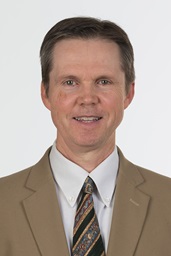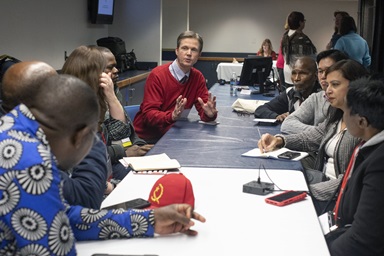Women make up half the world’s population, but based on the lack of women’s voices in the media, one would never know that.
Key findings of the Global Media Monitoring Project’s 2015 report show the overall portrayal and representation of women in the news media has stagnated since the last report five years ago.
Representatives of United Methodist Women, the World Association for Christian Communication and UN Women were part of the project’s Nov. 23 announcement at the United Nations.
This year’s report marked the largest study yet, said Glory Dharmaraj of UMW, who serves as the project’s U.S. coordinator and has been involved since its inception in 1995.
With data from 114 countries, the report provides analysis and case studies at global, regional and national levels and follows trends developed since the project began.
In many ways, Dharmaraj explained, the monitoring project is “a social movement” in which global and local work together.
“We are now able, not only to have a comprehensive picture of a day in the news worldwide, but we also can compare how it has changed and not changed over the past 20 years,” she said.
What has not changed
The Global Media Monitoring Project’s 2015 report seemed to reflect what has not changed, at least in terms of statistics:
- Worldwide, only 24 percent of the people heard, read about or seen in newspaper, television and radio news are women, the same as in 2010.
- That percentage only rises to 26 percent on digital news-delivery platforms and in social media “tweets.”
- The gender gap in coverage is widest in news about politics and government.
- In the past 10 years, the only category where coverage has risen significantly is in the portrayal of women as survivors of domestic violence.
- A global gender disparity also exists between female and male news reporters ─ a “glass ceiling” for women in the newsroom.
Karin Achtelstetter, the World Association for Christian Communication’s top executive, said the 2015 results have left her concerned and impatient.
“We have to end media sexism by 2020,” she declared. “At this rate of change, it will take at least three-quarters of a century to reach parity in numbers.”
Only an ambitious target date can draw attention and accelerate change, Achtelstetter added.
Despite the disappointing numbers, the 2015 report offered interesting regional indicators, she noted.
Latin America had the greatest gains in representation, which Achtelstetter attributed to factors such as the number of female heads of government, a vibrant feminist movement, a strong civil society working toward communications rights, significant human rights activism and existing legal frameworks to support issues of equality.
“We have examples where a region shows it is possible to improve and accelerate the progress,” she said.
Bloom is a United Methodist News Service multimedia reporter based in New York. Follow her at https://twitter.com/umcscribe or contact her at (646) 369-3759 or [email protected]
Like what you're reading? Support the ministry of UM News! Your support ensures the latest denominational news, dynamic stories and informative articles will continue to connect our global community. Make a tax-deductible donation at ResourceUMC.org/GiveUMCom.




